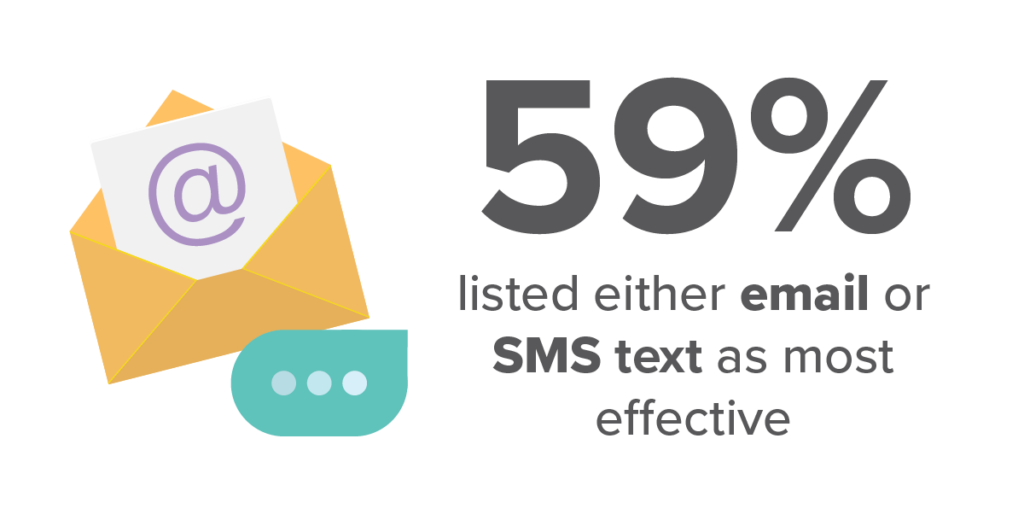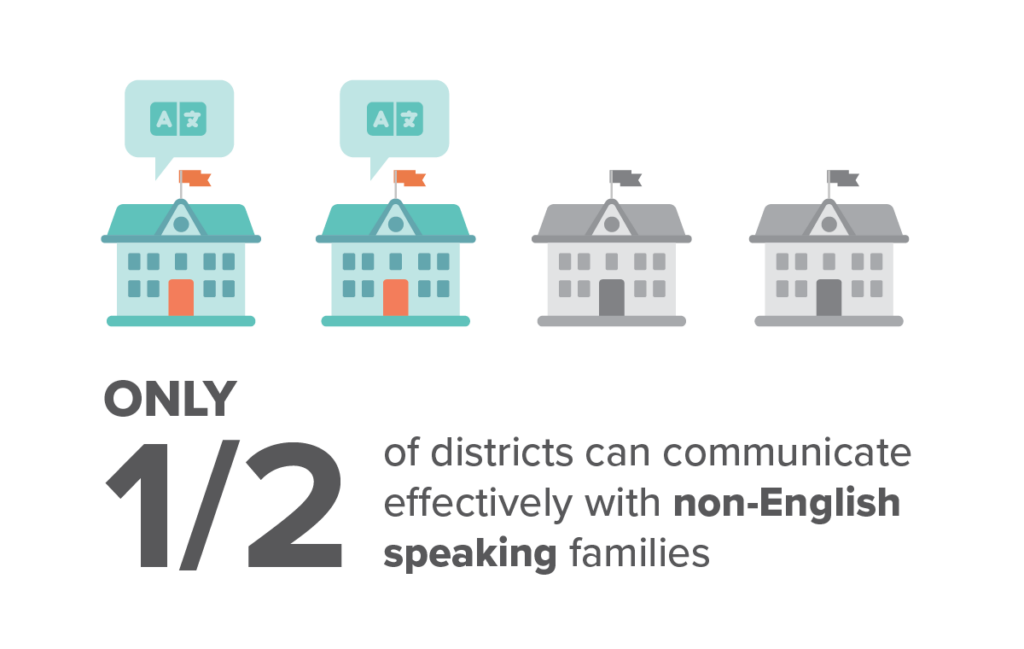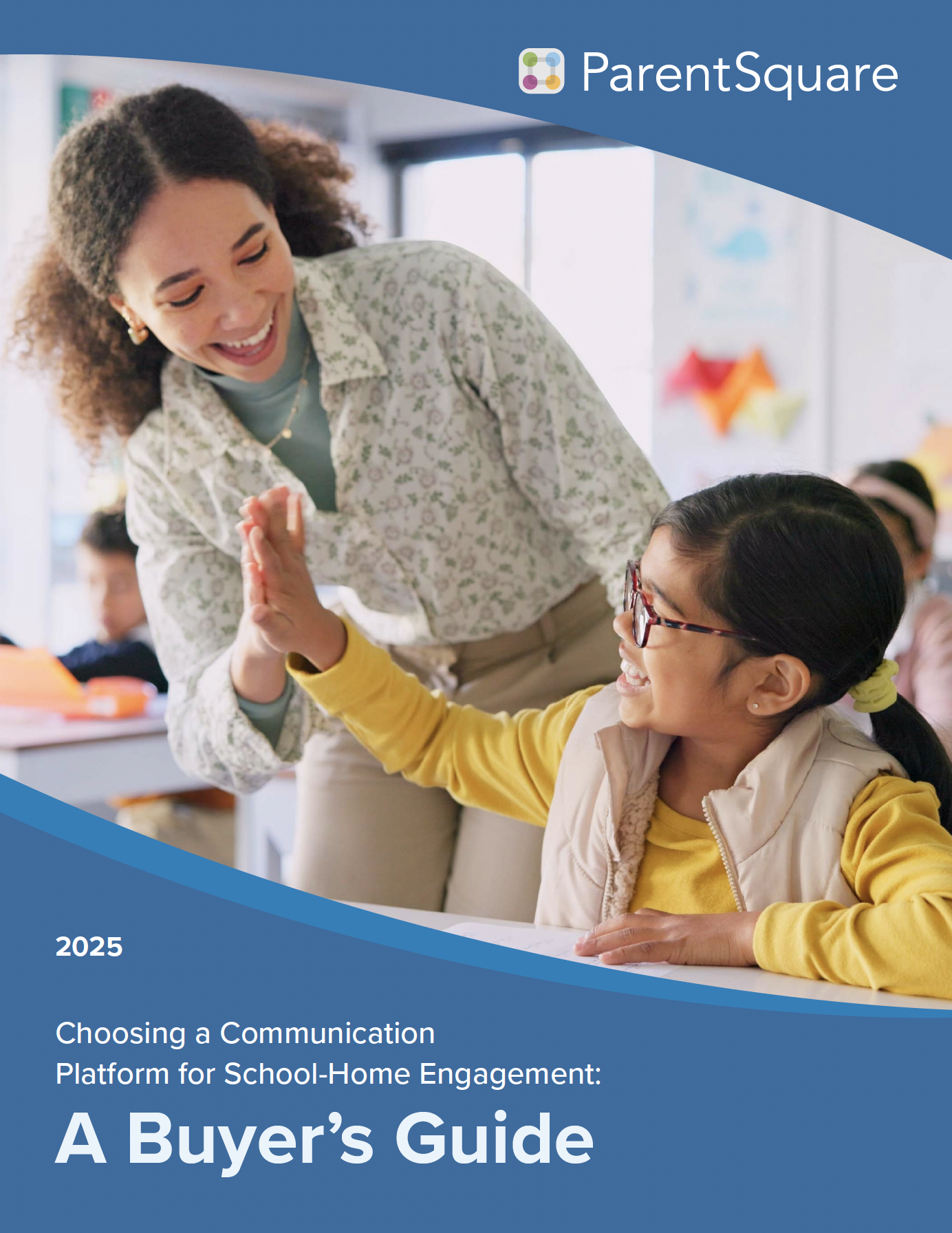
In conjunction with our 2023 national survey about the state of school-home communications, we hosted a panel discussion with school leaders. The survey, conducted in February 2023, had over 1,100 respondents spanning across a diverse group of stakeholders. Respondents included administrators, school communications staff, teachers, parents and other stakeholders in school-home communications.
Through this survey, we found several key findings about how schools and families are communicating:
- Email and text continue to lead as most effective channels, with 59% of respondents choosing either email or text as their most effective communication channel.
- Facebook continues to dominate in social media, with 70% of respondents ranking it as their most effective social channel.
- Reaching all parents and guardians continues to be a challenge. Only 39% of schools and districts report they reach 90% to 100% of parents and guardians.
- Communicating with non-English speaking families is a challenge. About half of districts can communicate effectively with non-English speaking families.
- There is still work to be done in integrating communication tools with other systems. Efficiency is a critical success factor for school-home communications, so integrating technology to remove redundancy or manual interference is highly desirable.
- District and school branding is growing in importance. Over a third of respondents report that branding and marketing are a top priority.
To discuss the implications of these survey results, ParentSquare’s Dr. Chad Stevens had a conversation with Cathy Kedjidjian, APR, and Dr. Jim Roberts. These communications leaders discussed their thoughts about the results of our survey and how these results apply to their own districts’ picture of school-home communications.
Survey Finding: Email, text and Facebook are the most effective communication channels
What do you think about these results?

As executive director of communications in her school district, Cathy Kedjidjian noted that it can be a challenge to get staff and families both to actually open and read emails. Often, people will mark their emails to read later, but never get to it.
In Kedjidjian’s district, especially with multilingual families, text is the best way to reach the most people. However, email still holds its value because it’s easier to search than text. As for social media, Kedjidjian views it as a tool for widening the scope of communications.
“Social media is a tool in the toolbox, but we never put anything on social media that is critical to know for all families or all community members––those go out via email and text. But you have to have those tools in the toolbox to reach in many ways to the community,” Kedjidjian explained.
Dr. Jim Roberts echoed that text messages have the best open rate in his district, too. When choosing which channel to send a message through, the audience is key to targeting communications. Facebook is more regularly used by older community members, but Dr. Roberts noted that when trying to communicate with students, they might use Instagram or YouTube.
Dr. Chad Stevens pointed out the importance of choice when it comes to receiving communications. Parents and guardians of preK-12 students span across multiple generations, and they all have very different ways of using technology. Sometimes, sending messages through many channels is the most effective way to engage all families.
What’s the difference between communication and engagement?
Dr. Roberts said that communication is sharing a message, so families have the information. It’s almost a one-way means of exchanging information. Engagement, however, is a back-and-forth process with the goal of receiving input to engage in some kind of two-way situation. This requires reaching out to stakeholders in a different way.
Kedjidjian marks the difference between communication and engagement as a question of outputs versus outcomes. Engagement ultimately moves the needle, causes a change in behavior or attitude, or leads students and families to feel connected and like they belong.
Survey finding: Communicating with non-English speaking families is a challenge.
What has your experience been?

Kedjidjian noted that communicating with non-English speaking families is getting easier for a few reasons. One of the ways is through the recognition of all of the different languages in the district, which leads to more effective communication.
“There’s more awareness of the importance of the home-school connection, and you can’t have that connection if you’re not communicating effectively, if parents aren’t understanding how to access, how to read general communication,” Kedjidjian said.
There are a lot of tools to support communication, such as automatic translators on parents’ phones. Kedjidjian said that families know that if they need some information they can go to the website and find it. The information is easily available and can be translated. If the district is sending out something it can’t translate ahead of time, they link it to their website, so families know how to translate it if needed.
“We all get better by being culturally responsive,” Dr. Roberts said.
Kedjidjian agreed with this sentiment, noting that personal, one-on-one communications are the most important. Whether in-person or over the phone, these conversations help to instill a sense of belonging. Plus, it brings the community together when those conversations are had.
“There’s more awareness of the importance of the home-school connection, and you can’t have that connection if you’re not communicating effectively, if parents aren’t understanding how to access, how to read general communication.”
– Cathy Kedjidjian, APRSurvey finding: Reaching all parents and guardians continues to be a challenge
What are some best practices for reaching families?
When students aren’t doing the best and families aren’t engaged, it’s hard to keep up, Dr. Roberts said. To keep parents and guardians connected, it’s important to get all contact information from the start and ensure families maintain up-to-date contacts.
Tracking this information can help find out what is needed from families, at which point communications staff will reach out to families to get their information into the system as quickly as possible. Dr. Roberts’ district also has a practice of re-enrolling students, so that they have to manually confirm or change any contact information to help maintain it as current.
Kedjidjian noted that at the frontline of communication, school building administrative assistants can get the information that is needed when you’re struggling to contact or engage certain families.
Additionally, resource fairs can help reach families with the right information. In Kedjidjian’s district, resource fairs are an opportunity to share information about the district, have conversations and be visible in the community. The fairs are also a way to share community resources through partnerships with the township, library, legal aid services, and local health and mental health services.
“Equitable access to opportunity is key, and it’s hard to have equitable access to opportunity if we’re not communicating with certain segments of our stakeholders,” Dr. Roberts said.
This conversation opened up a valuable dialogue on the state of school-home communications and finding ways to reach diverse school communities with different channels of communication. To view the conversation in its entirety, including an additional discussion about school branding, check out the webinar recording here.







